Do you have a question about the PIAGGIO beverly 500 and is the answer not in the manual?
Identifies and explains the main controls and indicators on the scooter's dashboard.
Details the analogue instrument panel, including speedometer, odometer, and warning lights.
Explains the digital clock display and how to adjust time and date settings.
Covers ignition states (LOCK, OFF, ON), steering lock, and key removal.
Describes the operation of the turn signal switch and the horn button.
Explains the function of the light switch for dipped beam, upper beam, and passing lights.
Details the operation of the start-up button and the engine stop button.
Explains the anti-theft immobilizer system, its activation, and key recognition.
Describes the master and standard keys and the importance of the code card for programming.
Explains the function of the immobilizer system's warning light on the instrument panel.
Details how the immobilizer system is activated and deactivated by the key.
Step-by-step procedure for programming new keys into the immobilizer system.
Instructions on how to access the fuel tank and open the cover.
Information about the 12V power socket located in the helmet compartment.
Explains the location and importance of chassis and engine identification numbers.
How to electrically open the saddle and access the rear top box.
Instructions for using the helmet anti-theft hook on the luggage rack.
Essential checks before using the scooter, including fuel, brakes, tyres, and lights.
Correct procedure for adding fuel, recommended fuel type, and safety warnings.
Guidelines for checking tyre pressure and identifying wear indicators for safe riding.
How to adjust the spring preloading on the shock absorbers for different riding conditions.
Recommendations for the first 1000 km to ensure proper engine break-in.
Step-by-step guide to starting the engine, including safety interlocks.
Troubleshooting tips for difficult engine start-ups, including potential flooding.
Procedure for safely switching off the engine using the ignition key.
Instructions for using the centre stand and side stand correctly.
Explanation of the automatic transmission, clutch usage, and overheating precautions.
Essential tips for safe operation, including helmet use, speed, braking, and road conditions.
Information on using accessories and their effect on vehicle stability and performance.
Covers checking oil levels, topping up, and the oil pressure warning light.
Details the procedure and frequency for changing engine oil and filter.
How to check and top up the oil level in the rear hub.
Information on tyre pressure checks, wear indicators, and specifications.
Step-by-step guide for removing and refitting the spark plug.
Instructions for removing, cleaning, and refitting the air filter element.
How to check and top up the engine coolant level and its maintenance schedule.
Covers checking brake fluid levels and topping up procedures.
Accessing the battery, general maintenance, and warnings for proper care.
Location and function of fuses, and precautions for electrical system modifications.
How to access and maintain front headlight bulbs and adjust beam alignment.
Instructions for replacing front indicator and rear tail light bulbs.
Procedures for license plate light, helmet compartment light, and mirror adjustment.
Information on front and rear disc brake operation, wear compensation, and maintenance.
Handling tyre punctures with Tubeless tyres and emergency repair options.
Procedures for long-term storage and recommended cleaning methods.
Key technical data for the engine, dimensions, and performance characteristics.
Lists the tools included in the scooter's kit for basic maintenance.
Advisories on using original Piaggio parts, accessories, and their impact on safety and warranty.
A summary table outlining maintenance intervals and required checks for optimal performance.
A table listing recommended products for engine oil, brake fluid, coolant, and grease.
Information about the Selenia Moto Rider range of lubricants and their benefits for Piaggio scooters.
Identifies and explains the main controls and indicators on the scooter's dashboard.
Details the analogue instrument panel, including speedometer, odometer, and warning lights.
Explains the digital clock display and how to adjust time and date settings.
Covers ignition states (LOCK, OFF, ON), steering lock, and key removal.
Describes the operation of the turn signal switch and the horn button.
Explains the function of the light switch for dipped beam, upper beam, and passing lights.
Details the operation of the start-up button and the engine stop button.
Explains the anti-theft immobilizer system, its activation, and key recognition.
Describes the master and standard keys and the importance of the code card for programming.
Explains the function of the immobilizer system's warning light on the instrument panel.
Details how the immobilizer system is activated and deactivated by the key.
Step-by-step procedure for programming new keys into the immobilizer system.
Instructions on how to access the fuel tank and open the cover.
Information about the 12V power socket located in the helmet compartment.
Explains the location and importance of chassis and engine identification numbers.
How to electrically open the saddle and access the rear top box.
Instructions for using the helmet anti-theft hook on the luggage rack.
Essential checks before using the scooter, including fuel, brakes, tyres, and lights.
Correct procedure for adding fuel, recommended fuel type, and safety warnings.
Guidelines for checking tyre pressure and identifying wear indicators for safe riding.
How to adjust the spring preloading on the shock absorbers for different riding conditions.
Recommendations for the first 1000 km to ensure proper engine break-in.
Step-by-step guide to starting the engine, including safety interlocks.
Troubleshooting tips for difficult engine start-ups, including potential flooding.
Procedure for safely switching off the engine using the ignition key.
Instructions for using the centre stand and side stand correctly.
Explanation of the automatic transmission, clutch usage, and overheating precautions.
Essential tips for safe operation, including helmet use, speed, braking, and road conditions.
Information on using accessories and their effect on vehicle stability and performance.
Covers checking oil levels, topping up, and the oil pressure warning light.
Details the procedure and frequency for changing engine oil and filter.
How to check and top up the oil level in the rear hub.
Information on tyre pressure checks, wear indicators, and specifications.
Step-by-step guide for removing and refitting the spark plug.
Instructions for removing, cleaning, and refitting the air filter element.
How to check and top up the engine coolant level and its maintenance schedule.
Covers checking brake fluid levels and topping up procedures.
Accessing the battery, general maintenance, and warnings for proper care.
Location and function of fuses, and precautions for electrical system modifications.
How to access and maintain front headlight bulbs and adjust beam alignment.
Instructions for replacing front indicator and rear tail light bulbs.
Procedures for license plate light, helmet compartment light, and mirror adjustment.
Information on front and rear disc brake operation, wear compensation, and maintenance.
Handling tyre punctures with Tubeless tyres and emergency repair options.
Procedures for long-term storage and recommended cleaning methods.
Key technical data for the engine, dimensions, and performance characteristics.
Lists the tools included in the scooter's kit for basic maintenance.
Advisories on using original Piaggio parts, accessories, and their impact on safety and warranty.
A summary table outlining maintenance intervals and required checks for optimal performance.
A table listing recommended products for engine oil, brake fluid, coolant, and grease.
Information about the Selenia Moto Rider range of lubricants and their benefits for Piaggio scooters.
| Engine Type | Single cylinder, 4-stroke |
|---|---|
| Displacement | 493 cc |
| Fuel System | Electronic fuel injection |
| Front Tire | 110/70 - 16 |
| Length | 2, 150 mm |
| Width | 780 mm |
| Seat Height | 790 mm |
| Maximum Torque | 43 Nm @ 5, 500 rpm |
| Cooling System | Liquid cooled |
| Transmission | CVT |
| Front Suspension | Telescopic fork |
| Front Brake | Single disc |
| Rear Brake | 240 mm disc |
| ABS | No |
| Rear Suspension | Dual hydraulic shock absorbers |
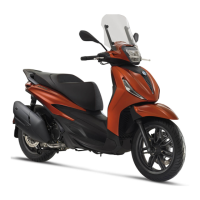
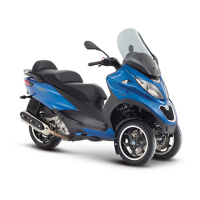
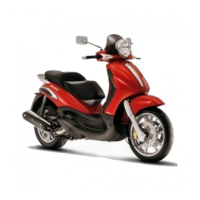

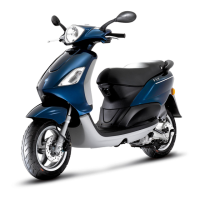
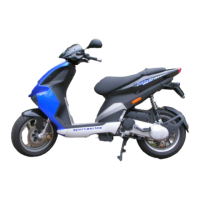
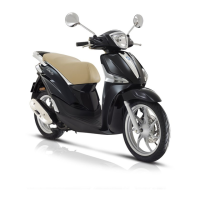

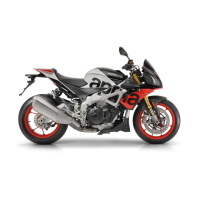
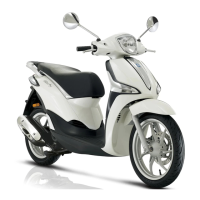

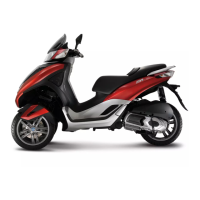
